Rising Up: Critical Awareness and Common Ground
Within each Cycle we offer Key Ideas and Tools to support you wherever you are in your movement building journey. Are you just starting out or are you in the heat of a shaking up moment? What is emerging in your context and what do you want to do? What kind of capacity do you have? Have you thought about risks and safety? These Cycles can be used as a framework for Movement Builders—both experienced and new. So start collecting your tools and store them in your We Rise toolkit.
Rising Up is about discovering the power within us, the common ground that we share with others, and the potential we have together to change our lives, our communities and our world.
-
Safe Space Creating respectful places for dialogue and listening where we can speak our truth, share stories about our lives, question taboos and resist the shame and stigma that silence us; and where we can tap our own knowledge and know-how.
-
Heart Mind Body Affirming our wholeness and worth as an act of love and resistance given the toll that violence and oppression take on our spirit; caring for our bodies, health, sexuality, emotions, and intelligence in order to foster vitality and love in our lives, organizations and communities.
-
The Personal is Political Understanding and connecting the struggles, pain and power dynamics we face in our private lives to injustice in the society as a whole. Recovering and reinterpreting our individual and collective histories with this new perspective.
-
Common Ground and Community Finding common ground with others around similar experiences, problems and hopes, and together forging common cause.
-
Power Within Affirming the transformative and powerful knowledge that rises within us, that our lives matter and that we possess inherent worth, ideas and ability.
-
Speaking Out—Freedom and Expression Speaking out, using theater, art, writing and other means to give voice to what matters and what we have lived through; overcoming fear to imagine possibilities and make different choices in our lives.
-
“For me, forgiveness and compassion are always linked: how do we hold people accountable for wrongdoing and yet at the same time remain in touch with their humanity enough to believe in their capacity to be transformed?”—Bell Hooks Safe Space
A safe space is one in which individuals feel they can bring their ‘full selves’ and engage in open conversation and mutual learning. Creating the conditions for safe space requires attention to physical, emotional and political safety.
In safe spaces we can speak our truth, share stories about our lives, question taboos, and discuss sensitive topics without fear or shame. A safe space invites us to listen with respect, compassion and curiosity, and to pay attention to the differences, inequities, and power dynamics among participants that privilege some and silence others. And safe space requires awareness and mitigation of any risks (e.g. security, confidentiality, surveillance) that come with activism and or exist in the context.
+ Read MoreBy creating a safe space for reflection and dialogue, we foster not only meaningful connection and understanding, but also deepened political trust – the foundation of collaboration and solidarity. It is from here that we can identify common problems, find solutions, navigate conflict and make decisions together.
“It was JASS who came in and asked us what was burning in our hearts, and then we started addressing the issue of deformation from ARVs [Antiretroviral drugs]. JASS has taught us how to put our voices together for collective action in order to name and shame the government, as well as to lobby for better quality ARVs. We wanted our dignity back.”―Tiwonge Gondwe, Malawian Activist
Conditions for Safe Space
The nature of the physical space matters. The space needs to be comfortable and private. The more welcoming, the better. Natural light and windows are ideal. Sitting in a circle can help avoid or interrupt power dynamics.
Creating agreements among those in the space helps define safety—including about confidentiality, consent, respectful communication and dealing with emotion in the space. Participants have to trust that they can speak freely, and that what they share will remain completely confidential unless by consent.
Fostering safe space often includes relaxation, artistic expression, dance, ritual, laughter, and other elements to support activists dealing with stress, fear, and violence in their contexts. The integration of the heart, mind, and body supports well-being and allows different experiences and ways of knowing into the conversation.
Structuring conversations about difficult topics allows multiple perspectives to surface and discussions to go deeper. Everyone should feel that their voices and experiences matter, and that collectively they are engaged in a process that will strengthen their ability to stand in solidarity and mobilize for change.
“Safe spaces enable women to deal with their fears and sense of guilt, and to begin putting their wellbeing at the forefront.”―Malena de Montis, JASS Mesoamerica
Tools For Creating Safe Spaces
-
Adelaide: I understand safe space as an environment that allows women’s voices and experiences to be expressed, heard, respected, and validated, free from reprisal. Oftentimes, women don’t have spaces that allow them to talk openly, or to feel that their voices are valid and legitimate.

-
 Orfe: The creation of safe spaces implies a process of building political and personal trust. It also implies knowledge of the context in which the actions and processes are taking place, be they training or something else. This entails building a space where safety means not feeling judged, where conditions exist to be able to freely express the dilemmas and fears -- and even the prejudices -- that we have when we build collectively. Safe space allows us to unravel them and find ourselves in a place free of violence and judgment, a place of mutual recognition of our differences.
Orfe: The creation of safe spaces implies a process of building political and personal trust. It also implies knowledge of the context in which the actions and processes are taking place, be they training or something else. This entails building a space where safety means not feeling judged, where conditions exist to be able to freely express the dilemmas and fears -- and even the prejudices -- that we have when we build collectively. Safe space allows us to unravel them and find ourselves in a place free of violence and judgment, a place of mutual recognition of our differences. -
Valerie: For me, safe space is not only about creating a place where people feel trust and confidence, and are able to share at a very deep level, but it’s also about creating a place that allows people to be creative.

-
 Anna: I see safe space as being about tapping into the “power within” by treating people as human beings, as worthy and valuable. It’s questioning the relationship between safe space and power. For example, negative power says, you don’t matter and your story is available for use by anyone, anytime. But positive power says, I am worthwhile, that how and when I want to tell my story matters.
Anna: I see safe space as being about tapping into the “power within” by treating people as human beings, as worthy and valuable. It’s questioning the relationship between safe space and power. For example, negative power says, you don’t matter and your story is available for use by anyone, anytime. But positive power says, I am worthwhile, that how and when I want to tell my story matters. -
Winnet: When creating safe space, it’s crucial that people come up with their own principles, for example confidentiality, punctuality and respect. You can get into spaces where people are talking about solidarity, togetherness, but they are not delving into what that unity looks like. As a facilitator, you guide the discussion so everyone understands these principles.

-
 Rosa: When we create safe spaces, we seek to build spaces where women can be heard and respected, where bonds of coexistence and sisterhood can be generated—anti-racist spaces that are free from discrimination, where participants are safe both physically and emotionally.
Rosa: When we create safe spaces, we seek to build spaces where women can be heard and respected, where bonds of coexistence and sisterhood can be generated—anti-racist spaces that are free from discrimination, where participants are safe both physically and emotionally. -
Winnet: Safe space allows women to engage fully, to start expressing how they feel. In a space that allows me to be me, I can also start looking at the person next to me in a different way. And, together we can see beyond our differences and start thinking about how to challenge the patriarchal system in a big way.

-
 Valerie: What you’re trying to do in creating a safe and creative space is not only to allow people to share deeply, but to also challenge their ideas, and challenge each other. So this becomes a process of mutual inquiry. We want to be affirming of people’s experiences and background, but with a spirit of real inquiry.
Valerie: What you’re trying to do in creating a safe and creative space is not only to allow people to share deeply, but to also challenge their ideas, and challenge each other. So this becomes a process of mutual inquiry. We want to be affirming of people’s experiences and background, but with a spirit of real inquiry. -
Adelaide: I also think the casual nature of safe spaces is critical. Informality allows women to open up and learn from each other. Having different women in one space with different perspectives—and being able to voice those perspectives—is very powerful because they are challenging each other, but not in a confrontational way, to look at the same issues a little differently. These conversations help to start shifting minds.

-
 Winnet: For me, a safe space is also about how we respond to vulnerability. And it’s a place where I can bring my vulnerabilities and feel that the space is able to hold and respond to that vulnerability.
Winnet: For me, a safe space is also about how we respond to vulnerability. And it’s a place where I can bring my vulnerabilities and feel that the space is able to hold and respond to that vulnerability. -
Anna: You have to be prepared that people will either share deeply or not. Also, it can’t be a therapy session. As a facilitator, you need to acknowledge those deep feelings and link them back to the patriarchal system. It is equally important to politicize our well-being by asking, how do we respond to someone’s story collectively and then put it back into the political space?

-
 Winnet: When women and others we work with can bring their full selves into the open, we are also creating vulnerabilities. That’s why abiding by the key principles governing our space is critical. For example, a space stops being safe when we start judging each other, break confidentiality (sharing information outside the space, without consent) and allow identities to become a barrier to engagement.
Winnet: When women and others we work with can bring their full selves into the open, we are also creating vulnerabilities. That’s why abiding by the key principles governing our space is critical. For example, a space stops being safe when we start judging each other, break confidentiality (sharing information outside the space, without consent) and allow identities to become a barrier to engagement. -
Adelaide: The creation of a safe space is not static. It’s an ongoing co-creative process between women. We are growing and challenging each other but it’s a journey we are taking together. This collaborative nature allows us to address issues that are making a space unsafe.

-
 Rosa: To guarantee the well-being of women defenders and activists in our training and gathering spaces, we look for appropriate places where risks have been assessed -- spaces planned for collective tranquility, where we can move and breathe calmly. It is important that the logistics respond to participants’ needs while respecting their cultural differences and setting, and when there are face-to-face meetings, it is particularly important to accompany the group during the arrival and departure processes.
Rosa: To guarantee the well-being of women defenders and activists in our training and gathering spaces, we look for appropriate places where risks have been assessed -- spaces planned for collective tranquility, where we can move and breathe calmly. It is important that the logistics respond to participants’ needs while respecting their cultural differences and setting, and when there are face-to-face meetings, it is particularly important to accompany the group during the arrival and departure processes.
-
-
“In addressing issues of the heart, mind and body, you must bear in mind that it’s important to work with a whole person and not just selected parts.”—Hope Chigudu, Zimbabwe Heart, Mind, Body
“One of the great contributions is self-care, which means putting your body as a woman defender at the center of the debate. Your body is political territory. It’s one of the first spaces for constructing freedom ... for defining how to exist as a woman, a human being, a citizen in this struggle.”—Honduran Activist
Heart-Mind-Body (HMB) is a political analysis and practice that puts our bodies, knowledge, feelings and safety at the center of how we understand inequality and build transformative, sustained change. HMB radically affirms the value of women’s lives as a foundation of movement building. How we care for ourselves and prioritize our individual and collective wellbeing is political work that nurtures our bodies, lives, organizations, and communities.
+ Read MoreOppression, inequality, and violence take a toll on our bodies, spirits, and sense of self, and so embracing our whole selves is an act of love and resistance. Women activists have much to teach about wellbeing as a collective practice to make women safer and stronger, as strategies for safety, wellbeing, self-care, and renewal sustain their vital organizing efforts in complex political contexts.
“Heart-Mind-Body is a framework for good community organizing and political action. If our strategies and communications engage people’s hearts, minds, and bodies—with inspiration, joy, smart information, opportunities to shape the agenda, and ways to move with us—they will join our justice cause and stay with us.”—Lisa VeneKlasen
Integrating HMB into ongoing work means including in our power analysis the impact on our bodies, emotions, and communities. Our feelings about the difficulties we face often connect us to others. Emotions like frustration and anger, which can be transformed by hope, are key to organizing social change.
HMB builds solidarity within communities, organizations, and even families who work together on strategies for safety and strength. It involves sharing simple practices and skills for self-care with those who have survived violence and/or burn out and thinking proactively about security and safety planning.
“Prioritizing our wellbeing as activists is ‘crossing the line.’”—Shereen Essof
Different HMB approaches reflect and affirm the vital connection between the heart, the mind and the body as a foundation for change. In working with women, we identify how power operates in their lives – the forms of power that oppress and subjugate them and those that can liberate and connect them. These learning and reflection processes energize and challenge women, allowing them to appreciate their individual struggles and talents, to name and analyze the common barriers they face, and to come together to make a difference.
“I came here feeling like I would not belong. I was very nervous because women look badly on sex workers. But here in the circle I have found my space and my hope. I spoke to a lawyer and she helped me. I came here with a heavy heart and spoke to a counselor who helped. I did not know this circle would give me a chance and change for my life.”—Sex Worker and Activist, Zimbabwe
Tools for Heart Mind Body
ON-THE-GROUND CONVERSATION…
Hear what Lisa VeneKlasen, Hope Chigudu, Adelaide Mazwarira, Rosa Chavez, Kunthea Chan and Shereen Essof have to say about Heart-Mind-Body. As members of the JASS community, they reflect on why valuing our lives, voices, emotions, and bodies is essential not just for our survival, but also for our resilience, joy, and the capacity to change our realities.
-
 Lisa: Heart-Mind-Body is about rebuilding, re-imagining, recovering, and learning. It is integrated into how we organize, our movement strategies, our collective security, and how we treat ourselves as activists. People change because something touched their heart. And what you feel in your heart, you tend to also feel in your whole body. HMB is a reminder that attending to our whole selves is part of good organizing and is social change in and of itself. HMB affirms that people change through a variety of physical, emotional, and mental processes to build our energy together.
Lisa: Heart-Mind-Body is about rebuilding, re-imagining, recovering, and learning. It is integrated into how we organize, our movement strategies, our collective security, and how we treat ourselves as activists. People change because something touched their heart. And what you feel in your heart, you tend to also feel in your whole body. HMB is a reminder that attending to our whole selves is part of good organizing and is social change in and of itself. HMB affirms that people change through a variety of physical, emotional, and mental processes to build our energy together. -
Adelaide: This process is vital because with activism, you often feel like you are running up a steep incline, with no time to rest, reflect, and regroup.

-
 Lisa: We want to involve people in a way that they can move, talk, dance, respond. I think that the Body is a critical reminder that this work is taxing, exhausting, and risky. If our organizing doesn’t take into account all the ways our activism against inequality and our fight for social justice strains us, exhausts us, and sometimes puts us at physical risk, we are not succeeding as organizers.
Lisa: We want to involve people in a way that they can move, talk, dance, respond. I think that the Body is a critical reminder that this work is taxing, exhausting, and risky. If our organizing doesn’t take into account all the ways our activism against inequality and our fight for social justice strains us, exhausts us, and sometimes puts us at physical risk, we are not succeeding as organizers. -
Kunthea: We need to be sensitive on how to use our body to center our Movement Building work, because if you’re not healthy, if your body is not healthy, it makes you not energized and not strategic and you have a lot of stress, so then the movement is also not healthy-because the movement arises from the people, from the body, from the movement, so the body must be healthy for the movement to be healthy.

-
 Rosa: Working with our body allows us to return to our center. It allows us to recognize our self and to comprehend the history of our body in connection with the history of our territory and the history of the earth. We work with the body using different techniques for corporal expression, relaxation, and awareness that are methodologically organized so that each person can experience their own process without forcing the body. The process acknowledges the plurality of the women within a group or within a setting. Working with our bodies helps us to recapture our movement, not only symbolically, but also in the recognition of bones and joints, and how they are linked to our movements and our struggles.
Rosa: Working with our body allows us to return to our center. It allows us to recognize our self and to comprehend the history of our body in connection with the history of our territory and the history of the earth. We work with the body using different techniques for corporal expression, relaxation, and awareness that are methodologically organized so that each person can experience their own process without forcing the body. The process acknowledges the plurality of the women within a group or within a setting. Working with our bodies helps us to recapture our movement, not only symbolically, but also in the recognition of bones and joints, and how they are linked to our movements and our struggles. -
Shereen: Doing this kind of work for change and peace means challenging power, which sooner or later results in violence. As activists, we expend so much energy on surviving and on creating spaces and strategies to benefit wider constituencies and sustain organizing, but we fail to expend the same energy to take care of our own bodily wellbeing as well as to strengthen our spirits to continue our work for a world where we can all be free.

-
 Adelaide: I understand why HMB is important, but how or why does the disconnect between heart, mind, and body happen in the first place?
Adelaide: I understand why HMB is important, but how or why does the disconnect between heart, mind, and body happen in the first place? -
Hope: It’s easy to put work at the center of our lives. But along the way we lose sight of the whole system, of ourselves, of sisterhood, and all that connects us as human beings. In the name of professionalism, we become isolated. We lose our creativity, audacity, energy, and love of our work. The work itself loses meaning and we end up feeling perpetually angry, anxious over deadlines, fatigued, and lonely. HMB helps us realize that it is legitimate to bring who we are into the work we do.
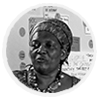
-
 Shereen: The belief that it is not justifiable to use resources such as time, energy, and space in order to reflect and care for oneself, to develop one’s self-knowledge and optimize one’s strengths, is in and of itself a form of violence that women activists enact upon themselves.
Shereen: The belief that it is not justifiable to use resources such as time, energy, and space in order to reflect and care for oneself, to develop one’s self-knowledge and optimize one’s strengths, is in and of itself a form of violence that women activists enact upon themselves. -
Lisa: The touchstone for all our work is women’s lives, experiences, and dreams. A woman’s heart, mind, and body absorb the grim reality of discrimination. For deep and lasting change, women’s whole selves must be at the center of leadership and organizing, a principle that gives meaning to the phrase, “from survivors to defenders.” When women are at the forefront of change, they don’t just address issues, they transform communities and systems.

-
 Shereen: Women activists from all walks of life are struggling to process emotional and physical trauma and stress. We have no choice but to make HMB a vehicle for re-tooling and re-energizing women and their movements in new ways. It is an essential ingredient to instilling cultures of peace, activist leadership, and women’s movement-building.
Shereen: Women activists from all walks of life are struggling to process emotional and physical trauma and stress. We have no choice but to make HMB a vehicle for re-tooling and re-energizing women and their movements in new ways. It is an essential ingredient to instilling cultures of peace, activist leadership, and women’s movement-building. -
Rosa: At JASS Mesoamerica we work on self-care in our training spaces by generating safe spaces and healing, harmonious, expressive, and playful experiences while using and recovering participants’ ancestral wisdom and knowledge. We provide containment and self-care tools for use within the training space and in their personal, family, and organizational or struggle contexts. From a place of thinking with heart and mind (sentipensar), well-being, and enjoyment, we generate spaces for reengagement and connection with oneself, with others, and with the territory.

-
-
"The 'personal is political’ is not only a feminist slogan from the 60s. It’s a basic starting point for doing effective political work and a foundation for bigger change in the world."—Lisa VeneKlasen The Personal Is Political
“The personal is political” is a well-known feminist rallying cry, coined in the late 1960s. It asserts that inequality and the social structures and beliefs that make up the foundation for power and privilege begin at home and are reproduced in our families. For women, the personal arena is a site where structural violence and inequality play out vividly. For example, domestic violence, an issue which was long viewed as a private matter, remains at the top of women’s rights agendas. Some laws have changed, but the police, the justice system, and family institutions around the world continue to treat it as a personal issue, rather than the crime and public health crisis that feminists have long galvanized the public to recognize.
+ Read More“The personal is political” is a guide to formulating political agendas, communication strategies, and organizing tactics. It is a useful framework for popular education methodologies and strategies. Since our perceptions about our social roles and what is happening in our families are all shaped by larger political and social structures, addressing deep inequality should include—and often start with—ourselves, our homes, and our contexts, even on big topics like militarization or consumerism. When we start there, we see that these problems infiltrate and shape our lives. In many ways, the personal impacts not only give us clues about the structures of power, which is key for consciousness-raising, but also help us identify great communication and organizing strategies.
At JASS, we believe that real transformation cannot be achieved with laws or policies alone. Freedom, dignity, respect, and the wellbeing of all human beings and the planet require a deep and profound transformation of social and political institutions. This kind of change involves the redistribution of power and resources, but importantly it also requires shifting social norms, beliefs and behaviors within our families, communities, and ourselves.
Tools for the Personal is Political
ON-THE-GROUND CONVERSATION…
Why is “the personal is political” still so relevant to organizing today? Valerie Miller, Alda Facio, Kunthea Chan, Carme Clavel and Lisa VeneKlasen talk about the origins of the phrase, and explain how this saying helps us “discover” patterns of injustice and power imbalance where once we framed our experiences as bad luck or our own fault. This critical awareness, they remind us, creates a foundation for deep and lasting change.
-
Lisa: Essentially, “the personal is political” is the core of feminism. It’s an inspiring way to help us understand how inequality works in our lives. It’s within our personal relationships where we experience an unequal balance of power, where we become accustomed to this imbalance. As women, society tells us we’re meant to serve, care for others, sacrifice. It’s very hard to step out of those roles.

-
 Carme: When we talk about the personal being political, it means that what happens in our intimate reality, what happens in our homes with our partners, with our sons and daughters is part of what we want to transform. And as we feminists say, feminism enters the home, it doesn’t stay on the front porch. It goes into the bedroom, it goes into the kitchen, it goes into the living room. That is, it starts to examine our roles within the home, our intimate roles, our partner roles if we have a partner, our roles as mothers. This is what we mean by "the personal is political."
Carme: When we talk about the personal being political, it means that what happens in our intimate reality, what happens in our homes with our partners, with our sons and daughters is part of what we want to transform. And as we feminists say, feminism enters the home, it doesn’t stay on the front porch. It goes into the bedroom, it goes into the kitchen, it goes into the living room. That is, it starts to examine our roles within the home, our intimate roles, our partner roles if we have a partner, our roles as mothers. This is what we mean by "the personal is political." -
Lisa: When you think of any truly transformative social movement in history, those movements that have gone the farthest involved issues deeply rooted within personal beliefs and consciousness, issues that played out in our personal day-to-day choices. For instance, racism, women’s inequality, LGBTQ rights—all these issues are deeply felt in family relationships, in daily interactions, and in our sense of belonging in any community. I think that “the personal is political” is important because when you disconnect a political problem from how you see yourself or how you live your life, the change you make is never going to last. It can never be sustained.

-
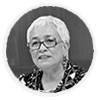 Alda: When we say “the personal is political,” we are affirming that the discrimination, exclusion, and violence that women suffer is not an individual problem that only concerns the assaulted, the discriminated, and the excluded, but also is part of a system that dehumanizes all women. This is therefore a political problem that requires political solutions.
Alda: When we say “the personal is political,” we are affirming that the discrimination, exclusion, and violence that women suffer is not an individual problem that only concerns the assaulted, the discriminated, and the excluded, but also is part of a system that dehumanizes all women. This is therefore a political problem that requires political solutions. -
Valerie: When women first got together in consciousness-raising groups, one of the first a-ha moments was, “You’re facing discrimination or domestic violence in your relationship? Me too!” Women began to realize that their problems were not just personal; they were shared. So, in this sense, that makes it a political problem—a problem involving power at a social level.

-
 Kunthea: We use a lot of personal stories to share among the activists and then we turn to inspirational stories so activists can learn about the societal, regional, and cultural systems that oppress them. Storytelling helps not only to inspire others, but also to reinforce within themselves this encouraging notion of confidence and self-worth. When activists hear similar stories of shared experiences, they will come to an understanding of rooted systemic obstacles that women face, and therefore find common ground and cross the line hand-in-hand.
Kunthea: We use a lot of personal stories to share among the activists and then we turn to inspirational stories so activists can learn about the societal, regional, and cultural systems that oppress them. Storytelling helps not only to inspire others, but also to reinforce within themselves this encouraging notion of confidence and self-worth. When activists hear similar stories of shared experiences, they will come to an understanding of rooted systemic obstacles that women face, and therefore find common ground and cross the line hand-in-hand. -
Lisa: For me, a good example is the HIV/AIDS pandemic. In the early years of the epidemic, sex wasn’t talked about. Women’s ability to negotiate sex is not universal and this fact was ignored. If the problem had been initially approached from a feminist perspective, it would have been clear that sexual relationships, sense of self, and the ability to know and control your own body are really important starting points for any kind of change. Addressing HIV/AIDS is not just about medicine.

-
-
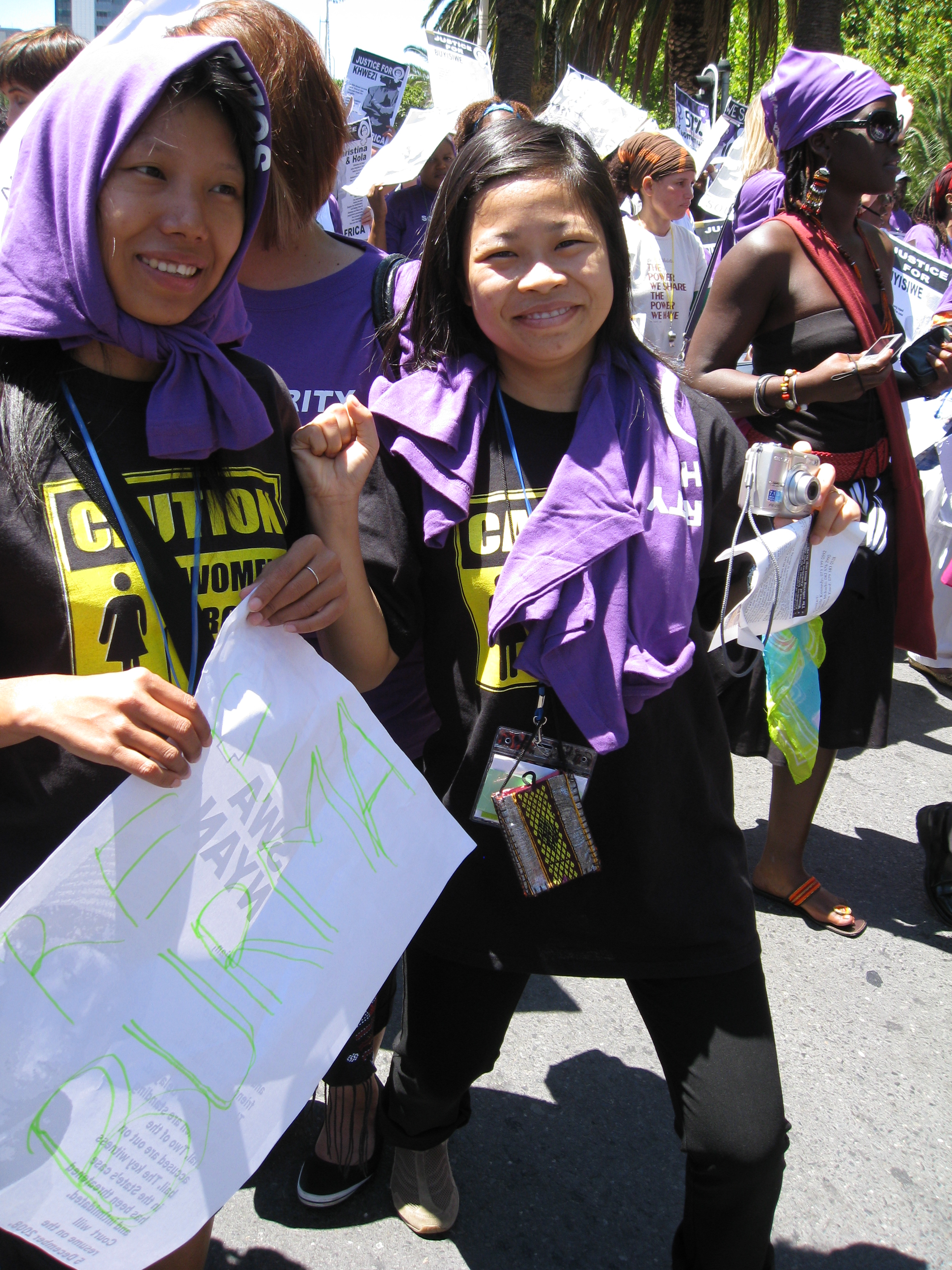
“The assumption behind transformatory potential is that the process of women working together and solving problems . . . will lead to empowerment, both collective and individual.”—Kate Young Common Ground & Community
Common ground and community is about finding what we share with others and using that as an essential starting point to building collective power for change. When we identify similar experiences, issues, hopes, and alternatives, we can forge a common cause and begin organizing.
It can be liberating to discover that you are not alone with your problems and that you can work with others to change them. People often come together by identifying common needs—from clean water to decent schools and protection from violence, to access to jobs, housing and land. It is this self-interest, transformed into common cause with a group of people, that sparks and sustains organizing efforts.
+ Read More“If done effectively, organizing unleashes and empowers activists and leaders. It surfaces and generates knowledge about common heartfelt problems, and begins to weave the relationships essential for joint strategies and action to solve those problems.”—Lisa VeneKlasen
Vital to building common ground is the creation of safe spaces that enable people to share their stories and concerns and to imagine alternatives that would make a difference. Through open dialogue, common problems emerge. People begin to analyze the root causes, and they recognize patterns of inequality embedded in the systems and social and political institutions. By identifying shared challenges, they realize that they can address them through collective action.
This process is the foundation for building a common political agenda and strategies to make change. As people imagine alternatives and solutions, it is important to bring to the surface and affirm common values, principles, and hopes; these connect us to others across our differences and potential fault lines. Common dreams not only attract others, but sustain us for long-term movement goals.
Tools for Common Ground and Community
ON-THE-GROUND CONVERSATION…
In this conversation, Nani Zulminarni, Lisa VeneKlasen, Alexa Bradley, Shereen Essof, Sibongile Singini, Patricia Ardon and Kunthea Chan discuss why common ground and community are the foundation for collective power, helping us come together across our many differences and acting collectively for change.
-
Sibongile: Women find common ground when they realize they are impacted by the same issues, and share the knowledge they have in their hearts, minds and bodies for their wellbeing. Finding common ground when we are building communities or movements is really important because it enables women to build their collective power, define and drive their agenda, and bring about the change they want.

-
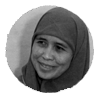 Nani: We used the condition and position of being young women, organizers, minorities, marginalized groups as the common feeling and understanding of the challenges they face. We also focused on the challenges they faced around the issues they were organizing on. This is how we found the common ground.
Nani: We used the condition and position of being young women, organizers, minorities, marginalized groups as the common feeling and understanding of the challenges they face. We also focused on the challenges they faced around the issues they were organizing on. This is how we found the common ground. -
Alexa: For me this is really about anyone who has faced hardship discovering that others share the same stories, and feeling a shift from shame and isolation to a sense of anger about injustice, but also to a sense of hope and affirmation.

-
 Shereen: In Malawi, we started with a really powerful process of body mapping, where women spoke really intimately about their life journeys and their bodies and how it is that they carry differing manifestations of patriarchy on their body including, what it means to live positively (HIV+). In these spaces we come together we share and we sit on the floor and over drinks and snacks we share stories of our lives and our coping strategies and often indigenous knowledge systems around what it means to live positively, sex and sexuality, the body etc. It was really in that process that we began to realize the power of the body deformities that women were experiencing. And so that became the very potent and pivotal moment that then allowed us to in some way turn a corner and escalate the movement building agenda in Malawi in a specific way.
Shereen: In Malawi, we started with a really powerful process of body mapping, where women spoke really intimately about their life journeys and their bodies and how it is that they carry differing manifestations of patriarchy on their body including, what it means to live positively (HIV+). In these spaces we come together we share and we sit on the floor and over drinks and snacks we share stories of our lives and our coping strategies and often indigenous knowledge systems around what it means to live positively, sex and sexuality, the body etc. It was really in that process that we began to realize the power of the body deformities that women were experiencing. And so that became the very potent and pivotal moment that then allowed us to in some way turn a corner and escalate the movement building agenda in Malawi in a specific way. -
Lisa: Common ground often forms around shared problems and anger. That’s really where effective community organizing begins, by building connections and developing strategies with people with whom you share common experiences and frustrations.

-
 Kunthea: To make a movement effective, we need to leverage our collective power through organizing. Organizing to me is not simply working alongside people within the same organization, but rather, collaborating with women in various sectors and movements and looking past our differences to find common ground as women activists.
Kunthea: To make a movement effective, we need to leverage our collective power through organizing. Organizing to me is not simply working alongside people within the same organization, but rather, collaborating with women in various sectors and movements and looking past our differences to find common ground as women activists. -
Alexa: This process is critically tied to power. As we find common ground, we recognize what is unjust or unfair and, because we have others with us, we can also begin to imagine challenging or changing those injustices. We also benefit from a sense of community. We have people who see us for who we are, care about us, hear us, and accompany us as we become stronger, and more assertive and involved. Finding common ground in our experiences and building community becomes the foundation for developing deeper politics and a more profound analysis of what happens to us.

-
 Paty: Women live in communities of different types, urban, rural, but in general women live in community, identify common problems, and look to others for mutual support. This is especially true in rural communities where women usually form a closer community. This is significant because although there is diversity among women -- even among indigenous women or among mestizo women -- and although we women experience our identities in different ways, the ability to identify common problems, the need for mutual support, and how what each can do complements what the others can do, gives women much more power. It also allows women to better protect themselves and to complement their distinct capacities and powers.
Paty: Women live in communities of different types, urban, rural, but in general women live in community, identify common problems, and look to others for mutual support. This is especially true in rural communities where women usually form a closer community. This is significant because although there is diversity among women -- even among indigenous women or among mestizo women -- and although we women experience our identities in different ways, the ability to identify common problems, the need for mutual support, and how what each can do complements what the others can do, gives women much more power. It also allows women to better protect themselves and to complement their distinct capacities and powers. -
Sibongile: When women come together, they can identify the root causes of the issues that are affecting them. They are connected, they are able to talk about their issues, they are able to share their talents, their resources, and they are able to openly acknowledge the conflicts between them, to build power with, and bring forward the desired change.

-
-
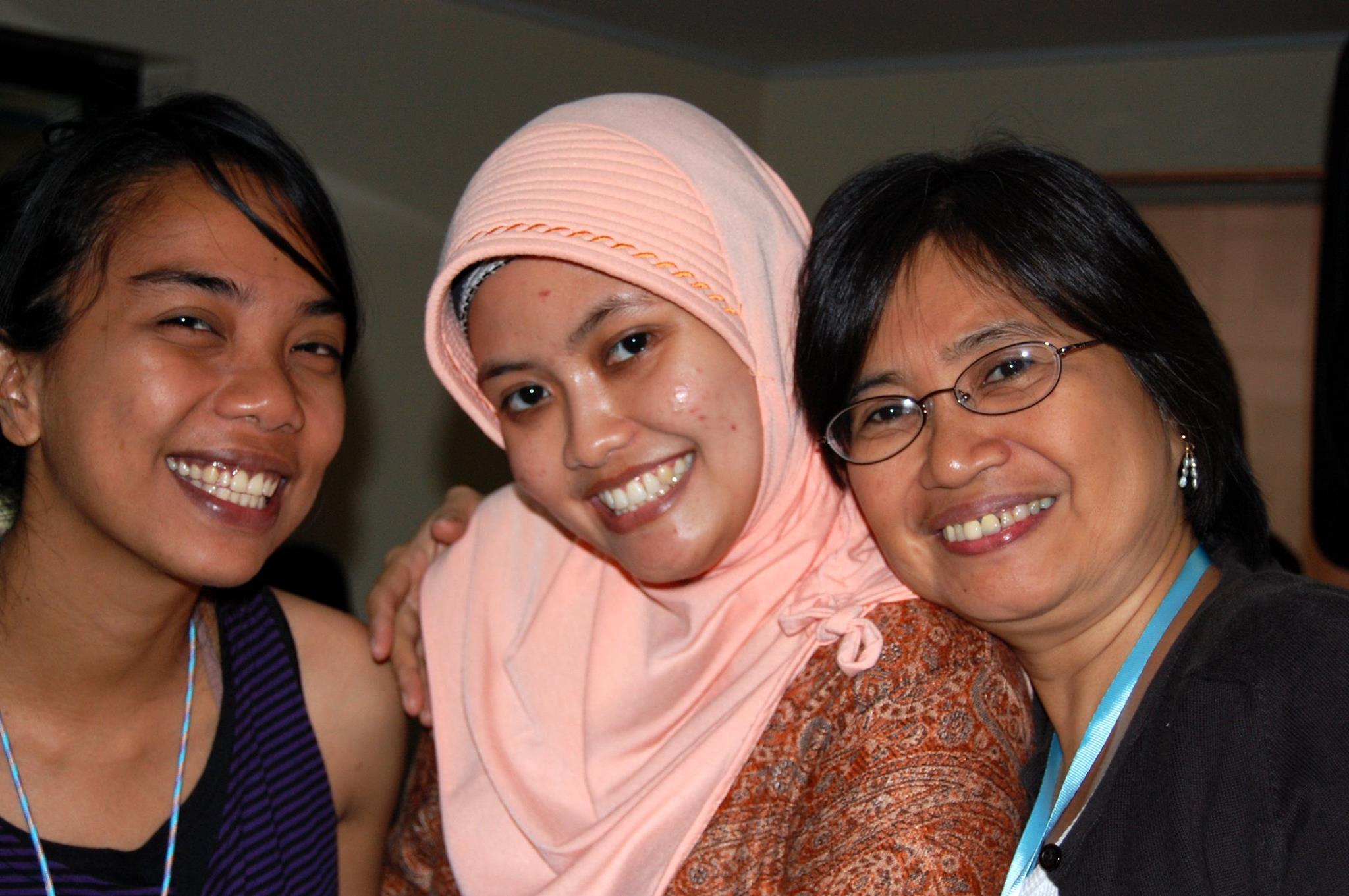
"Power within is physical, emotional, and psychological. It is the power to dream, hope, forgive, and problem-solve. Without it, we don’t speak out and step up. We often believe that this is the most unstoppable power."—Lisa VeneKlasen Power Within
Power within is about a person’s sense of self-worth and self-knowledge. Sometimes referred to as “personal empowerment”, it is the capacity to value oneself, think independently, challenge assumptions, have hope and seek fulfilment. Power within is rooted in a belief in inherent human rights and dignity.
JASS refers to ‘power within’ as a form of transformative power because when it is activated, it can transform our minds, our hearts and our sense of possibility. Effective grassroots organizing efforts help people affirm personal worth, tap into their dreams and hopes, and discover other dimensions of transformative power: power to, power with and power for.
+ Read More"I want to see change in the issues that affect women and their lives. I want to see the government put things in place to protect women and transform these situations. When I realized that I have the right to my life and when JASS helped me to realize that I have the power to claim my rights, it was a major turning point for me. I believe in the power within me and the power I have with my support groups." —Mirriam Munthali, Malawian activist
Power operates on many different levels and affects our lives in many ways. To achieve lasting social change, we have to understand power in its various forms--seen and unseen--and we have to recognize the power we ourselves have to transform the realities around us.
Underlying JASS’ conception of transformative power is an understanding that layers of oppression, based on gender, race, ethnicity, class, sexuality, ability, keep people subordinated, isolated, and feeling resigned and powerless. Efforts to awaken transformative forms of power such as power within must intentionally address the experiences and impacts of that oppression, and unleash the anger, hope and creativity that leads to change.
Experiences that affirm people’s knowledge, feelings, dreams and sense of confidence, coupled with experiences of belonging and community, nourish power within and are the basis of harnessing one’s agency or power to—the creative human capacity to act and to change the world.
Tools for Power Within
ON-THE-GROUND CONVERSATION…
In this conversation, Tiwonge Gondwe, Kwangu Tembo, Jessica and Sarah (Malawian activists with the Our Bodies, Our Lives campaign) share thoughts with Lisa VeneKlasen, Sibongile Singini and Everjoice Win from the JASS community about ‘power within’ – the power inside us to know and claim our own worth and feel confident—and how we come to understand that we have value, knowledge, and much to offer, no matter what those with more power want us to believe.
-
Tiwonge: My power is within me, but it is also with others for collective action. I utilized this power in two areas. First, for the first time in my life, I engaged our Member of Parliament fearlessly. I had meetings with him with members of my organization to demand our rights to resources in what we call the Constituency Development Funds (CDF) in Malawi. We know about those funds, and that they are ours. The second area is my personal life. I have managed to challenge my husband using the law to gain my freedom from violence. I shocked him; he never thought I would do it. Look at me now: I represent myself and speak for myself. This is a huge change.

-
 Lisa: Like all forms of power, the power within is dynamic. There are times when you feel confident and strong, like your voice matters, like you matter in the world. And there are other times when you feel completely marginalized, that you shouldn’t speak up because it’s not your place. An ongoing struggle in organizing is how to tap into the feelings of confidence, hope, and possibility when you feel discouraged and silenced.
Lisa: Like all forms of power, the power within is dynamic. There are times when you feel confident and strong, like your voice matters, like you matter in the world. And there are other times when you feel completely marginalized, that you shouldn’t speak up because it’s not your place. An ongoing struggle in organizing is how to tap into the feelings of confidence, hope, and possibility when you feel discouraged and silenced. -
Sarah: When I started imagining a new reality, I imagined I was educated, able to speak English, and with some good money in my bag. I refused to be diminished, suppressed, or destroyed. I refused to be warped by bigotry, tyranny, and pettiness. I refused! That is how I crossed the line of an inferiority complex and dependency on men. I am now a member of an HIV support group for sex workers. I know I am a feminist. My body is my own. That is what I tell my sex worker friends. My future plans include buying a plot of land, building a small house, and supporting rural-based sex workers to learn to stand on their own feet.

-
 Lisa: To have the opportunity to talk about the situation within your community and the world, and to talk about your own life—that is the starting point of ‘power within.’ Realizing that your own life has given you enormous amounts of knowledge and tools to address issues is critical to ‘power within.’ Also ritual, joy, dancing and celebration are essential to ‘power within’ because they generate energy that can sustain you in your activism.
Lisa: To have the opportunity to talk about the situation within your community and the world, and to talk about your own life—that is the starting point of ‘power within.’ Realizing that your own life has given you enormous amounts of knowledge and tools to address issues is critical to ‘power within.’ Also ritual, joy, dancing and celebration are essential to ‘power within’ because they generate energy that can sustain you in your activism. -
Kwangu: Through the movement-building process, I have found my voice and my power within. I am able to use my voice on all the issues that affect women in my community. I became a woman activist.
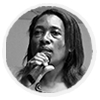
-
 Jessica: I used the power within myself to challenge a village chief who had called me and other HIV positive women ‘walking corpses’ when we asked for fertilizers. After, he tested HIV positive, he needed my help so I told him I would help but there were conditions. He was to call a meeting and explain that, when he refused to give us fertilizers, he did not know what he was doing. He must apologize to the women he called ‘walking corpses.’ He would declare his status and persuade people to go for testing. Above all, he would find bags of fertilizers for the group. I wanted justice. Only after doing all that would he be allowed to join our group as the first man to do so.
Jessica: I used the power within myself to challenge a village chief who had called me and other HIV positive women ‘walking corpses’ when we asked for fertilizers. After, he tested HIV positive, he needed my help so I told him I would help but there were conditions. He was to call a meeting and explain that, when he refused to give us fertilizers, he did not know what he was doing. He must apologize to the women he called ‘walking corpses.’ He would declare his status and persuade people to go for testing. Above all, he would find bags of fertilizers for the group. I wanted justice. Only after doing all that would he be allowed to join our group as the first man to do so. -
Lisa: Power within is a life-long journey. It has cycles and stages just like the kinds of power you build outside in the world. There are times when you move forward and are strong, and there are moments of self-doubt and feelings of failure. And to me, ‘power within’ is impossible without ‘power with.’ Even in moments of greatest self-confidence, you can still benefit from sharing something with others. It energizes you as you try to make change in the world, and in your personal life.

-
 Sibongile: In Malawi, when women started discovering their ‘power within’, there was this zeal or this passion to make things work for themselves first. A lot of women were living in a lot of oppression, so when they realised the power within themselves, they wanted to act on it to make sure that they were free. They also were able to see that they are not living in a world which is just for them, so they also decided to speak out and help other women. They shared knowledge with them to help them realise that whatever was happening to them was not right and should not happen. So they also used ‘power with’ to act together: to help change others as they changed themselves, and to use their collective power to make sure that things are really transforming for everyone in the community.
Sibongile: In Malawi, when women started discovering their ‘power within’, there was this zeal or this passion to make things work for themselves first. A lot of women were living in a lot of oppression, so when they realised the power within themselves, they wanted to act on it to make sure that they were free. They also were able to see that they are not living in a world which is just for them, so they also decided to speak out and help other women. They shared knowledge with them to help them realise that whatever was happening to them was not right and should not happen. So they also used ‘power with’ to act together: to help change others as they changed themselves, and to use their collective power to make sure that things are really transforming for everyone in the community. -
Everjoice: It’s important to recognize that once that power has been unleashed, and women begin to find each other, it is just amazing how unstoppable that becomes.

-
-
“We must speak about our sexuality freely... The failure to do so may stand between women and justice.”—Rudo Chigudu Freedom & Expression
Freedom and expression are vital to liberation, personal and collective. Movements cultivate and are nourished by both, as expressions of freedom and freedom of expression.
At a personal level, expressing ourselves and claiming our freedom – through art, murals, written and spoken words, theater, and direct action – is about having a voice and refusing to conform, be complicit or be silenced. It’s about having the freedom to speak our mind, but also freedom of movement and association. It's about autonomy in our bodies, thoughts and sexual expression. Stepping out and speaking out has a multiplier effect: it inspires others to do the same.
+ Read MoreWomen’s and other marginalized people’s voices, too often ignored, have the power to animate and embolden broader struggles and agendas for justice. By insisting on our right to speak out and our freedom, we challenge repressive social norms and make social and political demands for change.
“There is no such thing as the ‘voiceless’. There are only the deliberately silenced, or the preferably unheard.” —Arundhati Roy
In many of the places where JASS works, there are entrenched interests and deeply internalized social barriers that restrict freedom and freedom of expression. In Indonesia, fundamentalist political and religious influences promote the belief that a woman’s role is in the home and that women should be protected and controlled. Fear of stepping out of these roles silences women and dictates how they act and what they wear. FAMM-Indonesia, a young women’s alliance, is developing under-the-radar strategies to challenge shame and taboos about sex and sexuality, and promote young women’s leadership.
In Malawi, HIV+ women have overcome the silencing effect of shame and blame through in-depth work that affirms their stories and bodies. This work has given them the clarity and courage to demand respect as full citizens and to insist on replacing medicines that were distorting their bodies with better alternatives.
In Zimbabwe, JASS partner—Katswe Sistahood—supports young women to call out taboos surrounding sex, sexuality, and women’s bodies. Katswe uses performance arts to unleash young women’s voices and courage to resist traditional roles and demand respect and safety.
Saying the word ‘vagina’ in Shona is considered shameful in itself. Re-learning how to claim parts of our bodies as our own is a vital step in a strategy to politicize women’s personal experiences.” —Zimbabwean activist Rudo.
Overcoming fear and shame enables women to speak out, contribute freely, and create a better world. Through strategies that include social media and creative arts (e.g. dance, storytelling, poetry), activists can access information, debate ideas, offer counter-narratives, and mobilize to express themselves freely.
“How do we transform silence into voice? How do we transform the horrific into something that reclaims a sense of beauty that can catalyze other people in their journeys?"—Shereen Essof
Tools for Freedom and Expression
ON-THE-GROUND CONVERSATION…
Lisa VeneKlasen, Adelaide Mazwarira, Daysi Flores, Laura Carlsen, Rosa Chávez and Rudo Chigudu talk about exploring the power and liberation of finding our voices, whether in story-telling circles or speaking our truth in public spaces. Through art, stories, theatre, and public events, we break our silences and shatter limiting ideas of who we are and what we feel. Speaking out in whatever way we choose helps us feel free and powerful.
-
Lisa: Freedom of expression is a process, not a destination. An aspiration, a right, and a perpetual effort—one that is shaped by big political forces, local cultures and contexts, institutions, resource allocation, and beliefs about whose voice counts. We’re always working to be free and for others to be free to express themselves fully and contribute to a better world.

-
 Laura: In an age of disinformation and “post-truth”, speaking out about our lived realities is radical, and dangerous. As a journalist and movement-builder, part of organizing is to open up forums and ways for women to speak out against the normalization of violence and the narratives that try to push us out or force us to conform. Our word is one of the most powerful tools we have.
Laura: In an age of disinformation and “post-truth”, speaking out about our lived realities is radical, and dangerous. As a journalist and movement-builder, part of organizing is to open up forums and ways for women to speak out against the normalization of violence and the narratives that try to push us out or force us to conform. Our word is one of the most powerful tools we have. -
Lisa: Our voices matter for the visibility of our demands and experiences, to ensure that women’s perspectives and contributions are considered and recognized by our communities, decision-makers, policymakers, and the media.

-
 Adelaide: What silences us?
Adelaide: What silences us? -
Lisa: Inequality operates through cultural norms and unwritten rules. Over time, women get the message that their voices are less valuable, that their greatest contributions to society are to look pretty, to take care of domestic matters, and to reproduce. To speak out without shame, to have the right to be angry, to be strong, to be loud is a lifelong pursuit and breaks many cultural barriers. For people who are marginalized, speaking out takes a lot of courage and that’s why organizing is so crucial for making sure their voices are heard.

-
 Daysi: The media is one of the most competitive spaces for movements. Although communication and freedom of expression are a human right, those who have the means to exercise freedom of expression are still the most powerful, and that’s where the media barricade comes from. How can we break through this media barrier? Recognizing this reality and conducting power analyses to identify the cracks in these spaces, building our own media, developing our own technology, and establishing alliances, not only with powerful people and media owners, but also with those who keep that machinery running.
Daysi: The media is one of the most competitive spaces for movements. Although communication and freedom of expression are a human right, those who have the means to exercise freedom of expression are still the most powerful, and that’s where the media barricade comes from. How can we break through this media barrier? Recognizing this reality and conducting power analyses to identify the cracks in these spaces, building our own media, developing our own technology, and establishing alliances, not only with powerful people and media owners, but also with those who keep that machinery running. -
Adelaide: How are creative arts an important part of expressing your voice?

-
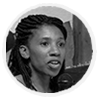 Rudo: Going onstage to perform monologues, dance, war cries and songs is an act of defiance. Because everything about our stories is private, there’s something brave in saying, “I’m sick and tired of pretending that my life is private when there’s nothing private about it.” There’s something courageous in saying that the privacy is actually killing me, that this private space is where I’m most violated and I can’t be silent about it anymore.
Rudo: Going onstage to perform monologues, dance, war cries and songs is an act of defiance. Because everything about our stories is private, there’s something brave in saying, “I’m sick and tired of pretending that my life is private when there’s nothing private about it.” There’s something courageous in saying that the privacy is actually killing me, that this private space is where I’m most violated and I can’t be silent about it anymore. -
Rosa: In art, immensely powerful non-hegemonic narratives can be created and recreated that touch very deep fibers of being, or of beings. Creative, artistic expressions come to touch other fibers of being that cannot be expressed with other types of language. The value of the use of speech and expression is one of the ways to use our power, to regain our power as women. Emancipatory art has accompanied struggles, mobilizations and moments of transformation throughout the history of people and movements. It leaves a record of impact that links generations.

-
 Daysi: Radio allows us not only to break through the media barrier, but also to break down hegemonic narratives that teach you day after day that your place is where you are and that you must stay there. Radios have a fairly large reach, but there is also something about listening to the radio that generates community, and that transports us to a dimension of space and time with which we can identify and with which we can build alternate realities. The radio can make you feel that another world is possible, regardless of whether it is through a song that reaches spaces of consciousness that we cannot otherwise explore.
Daysi: Radio allows us not only to break through the media barrier, but also to break down hegemonic narratives that teach you day after day that your place is where you are and that you must stay there. Radios have a fairly large reach, but there is also something about listening to the radio that generates community, and that transports us to a dimension of space and time with which we can identify and with which we can build alternate realities. The radio can make you feel that another world is possible, regardless of whether it is through a song that reaches spaces of consciousness that we cannot otherwise explore. -
Lisa: Voice is two things. It is this power within and the realization that your own perspective matters enough to say it out loud. The second part is adding your voice to others’ voices, and having that union serve as a rallying force of anger and hope to realize change.

-
 Adelaide: Is there a time when it’s not okay to self-express?
Adelaide: Is there a time when it’s not okay to self-express? -
Lisa: Yes, self-expression is not about venting or pure individualism. Freedom of expression is a shared resource, whose value increases when you are confident in your voice, and when you know when and how to use it. Currently, the prevalence of social media has created an interesting dilemma. On one hand, the current culture promotes the “self,” an individualistic notion of voice, where everything that crosses your mind has to be expressed. Alternatively, social media has enabled those whose perspectives are rarely heard to find their voice. It is really democratizing the possibility of being heard.

-
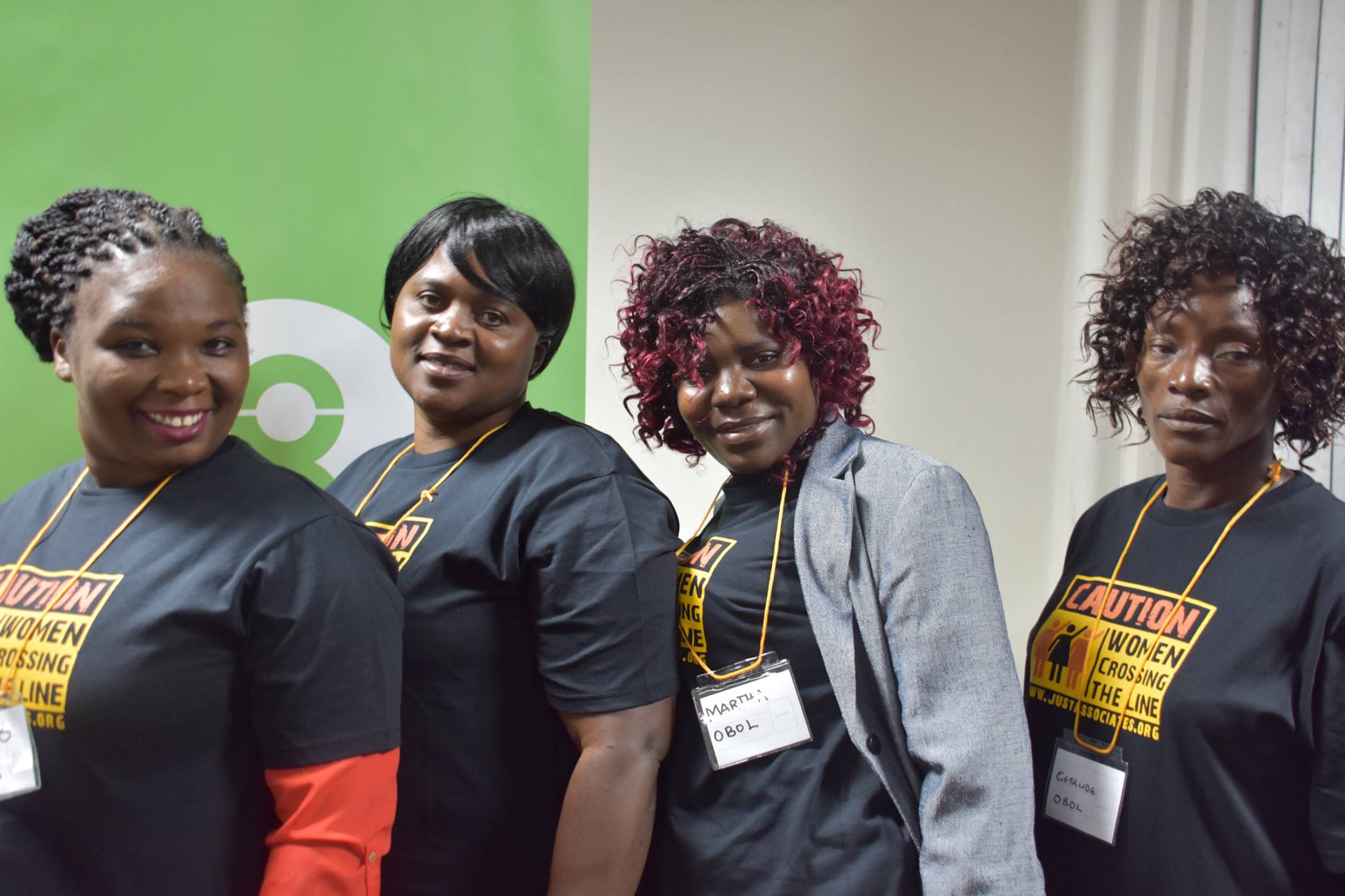




ON-THE-GROUND CONVERSATION…
In this conversation, Adelaide Mazwarira, Anna Davies-van Es, Winnet Shamuyarira, Rosa Chávez, Orfe Castillo and Valerie Miller reflect on the meaning of safe space and why it is politically essential, especially for those working with women whose voices are often suppressed, silenced, or marginalized. This conversation illuminates how creating safe space(s) not only enables us to speak our mind, but also allows us to be seen and valued for our full selves.